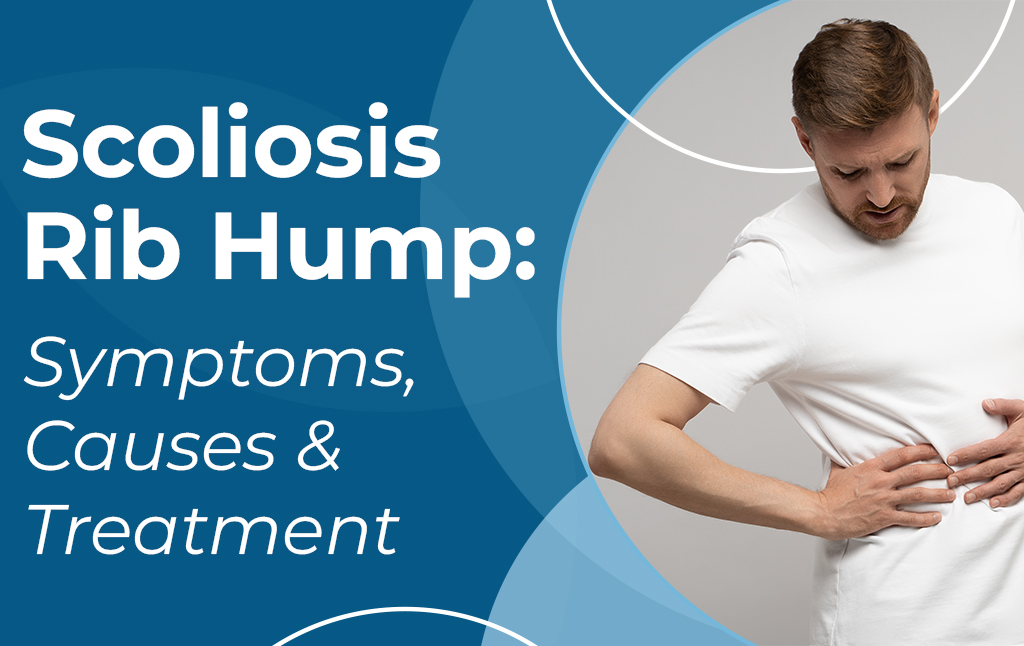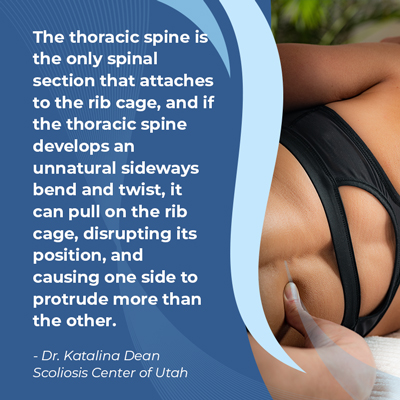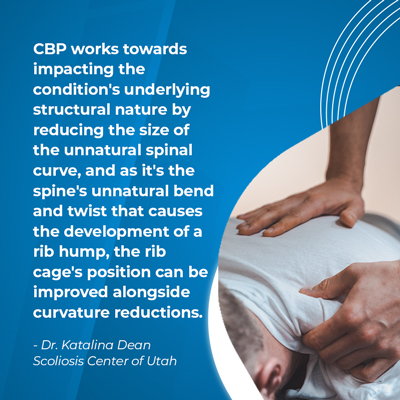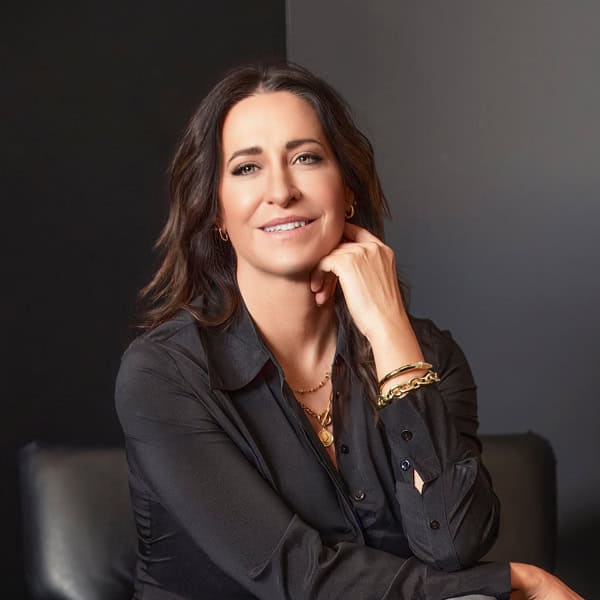Blogs
Scoliosis Rib Hump: Symptoms, Causes & Treatment

Scoliosis ranges widely in severity from mild to severe cases; the more severe a condition is, the more noticeable its effects are likely to be. The most common effect of childhood scoliosis involves postural signs. As an asymmetrical condition, the nature of scoliosis is to disrupt the body’s overall symmetry as it progresses.
A scoliosis rib hump is a postural change caused by scoliosis and involves one side of the rib cage protruding excessively. A rib hump is a common effect associated with thoracic scoliosis as the thoracic spine is the only spinal section that attaches to the rib cage.
In most cases of scoliosis, the area of the body that’s located the closest to the affected spinal section is going to feel its direct effects.
Thoracic Scoliosis
There are different types of scoliosis based on causation, severity, and its location within the spine.
The spine has three main sections with a characteristic curve type.
The cervical spine refers to the neck and has an inward-bending curve known as lordosis, while the thoracic spine has an outward-bending spinal curvature known as kyphosis and refers to the middle/upper back, and the lumbar spine is the lower back and features an inward-bending lordotic curve.
The thoracic spine is the largest spinal section so is vulnerable to a number of conditions, and as the only spinal section that attaches to the rib cage, it also helps protect important organs and enables the trunk’s wide range of motion.
Symptoms of Thoracic Scoliosis
Scoliosis causes the spine to develop an unnatural sideways spinal curve that also rotates, making it a 3-dimensional spinal condition.
Scoliosis introduces a lot of uneven forces to the spine and the entire body, hence the postural changes it can cause.
And again, the more severe a condition is, the more overt its symptoms tend to be.
The most common visual symptoms of thoracic scoliosis include uneven shoulders, uneven shoulder blades, an uneven waist, and a noticeable rib hump.
While scoliosis can be painful for some, it isn’t considered a common effect of childhood scoliosis, but once growth has stopped and skeletal maturity has been reached, the condition becomes compressive and can be painful.
Scoliosis pain can involve the back, the spine’s surrounding muscles, and nerves. Compression is uneven pressure, so if a section of the spine, its nerves within, and its surrounding muscles are being exposed to uneven pressure, a number of symptoms can develop.
Middle and upper back pain is common, as is nerve pain that radiates into the extremities, and when rib humps are involved, chest and rib pain can also be common.
Additional symptoms include changes to balance, coordination, and gait as a patient’s center of gravity is constantly shifting.
So now that we know why a scoliosis rib hump develops and where it develops, let’s talk about what causes it?
What Causes a Scoliosis Rib Hump?
 The thoracic spine is the only spinal section that attaches to the rib cage, and if the thoracic spine develops an unnatural sideways bend and twist, it can pull on the rib cage, disrupting its position, and causing one side to protrude more than the other.
The thoracic spine is the only spinal section that attaches to the rib cage, and if the thoracic spine develops an unnatural sideways bend and twist, it can pull on the rib cage, disrupting its position, and causing one side to protrude more than the other.
The spine’s rotation causes ribs on one side to be pulled away from the spine while ribs on the other side are moving toward the spine, and this can cause the rib cage to become increasingly unbalanced.
A rib hump is most visible when in a forward bend position, which is why an Adams forward bend test is commonly part of a patient’s initial assessment.
Scoliosis is progressive; its nature is to get more severe over time, so in cases of thoracic scoliosis, if a rib hump develops, it can also get worse over time.
The more severe scoliosis gets, the more potential there is for complications to develop.
In atypical and/or particularly severe cases of thoracic scoliosis that are left untreated, complications such as breathing problems can develop; this can be due to a loss of space for the lungs to function optimally within.
Muscular Imbalance
Another effect of scoliosis that can contribute to the development of a rib hump is a muscular imbalance.
Scoliosis doesn’t just affect the spine, but also its surrounding nerves and muscles, and when an unnatural spinal curve pulls its surrounding muscles in different directions, this can cause an imbalance with muscles on one side becoming strong but strained from trying to counteract the unnatural pull, and muscles on the opposite side becoming weak from lack of use.
A muscular imbalance can increase the effect of a rib cage hump as the rib cage and spine become increasingly unbalanced and unstable without the help of strong and balanced and surrounding muscles.
As progression occurs, a muscular imbalance can also get worse, hence the importance of a proactive treatment approach.
Scoliosis Rib Hump Treatment
It’s important to understand that a scoliosis rib hump, like all condition effects, is a symptom of the condition.
To improve/reverse effects of scoliosis, the condition itself needs to be addressed; there is an important distinction between addressing a condition’s symptoms, or the condition itself.
For long-term sustainable symptom relief, the condition’s underlying structural nature has to be addressed.
When it comes to treating scoliosis, being proactive has a number of benefits, including preventing progression and a number of condition effects from developing.
The milder a condition is when treatment is started, the more likely it is to respond well.
No treatment results can be guaranteed, but when diagnosed early and treated proactively, there are fewer limits to what nonsurgical treatment can achieve.
Here at the Scoliosis Center of Utah, conservative nonsurgical treatment is started immediately following a diagnosis.
As a progressive condition whose nature is to get worse over time, we want to impact it early on, before a lot of progression and condition effects have occurred.
Proactive Treatment
It’s more effective to be proactive with treatment and work towards preventing effects like a rib hump from developing, than it is to attempt to reverse effects that have become established.
Care at the Center includes Chiropractic Biophysics® (CBP), 3-dimensional corrective bracing, and our innovative physiotherapeutic exercise-based program ScoliBalance®; together, these treatment disciplines work together to impact conditions on every level.
 CBP works towards impacting the condition’s underlying structural nature by reducing the size of the unnatural spinal curve, and as it’s the spine’s unnatural bend and twist that causes the development of a rib hump, the rib cage’s position can be improved alongside curvature reductions.
CBP works towards impacting the condition’s underlying structural nature by reducing the size of the unnatural spinal curve, and as it’s the spine’s unnatural bend and twist that causes the development of a rib hump, the rib cage’s position can be improved alongside curvature reductions.
By having an integrative approach, treatment plans can be customized as the different facets of treatment are adjusted accordingly.
Throughout the course of treatment, the spine is closely monitored for how it’s responding and plans can be adjusted accordingly.
Conclusion
A scoliosis rib hump can develop as a postural change caused by the spine’s unnatural bend and twist.
As scoliosis introduces a lot of uneven forces to the spine and body, it can cause a variety of effects that disrupt the body’s overall symmetry.
The development of a rib hump is considered a common effect of scoliosis, particularly of thoracic scoliosis, because as the only spinal section that attaches to the rib cage, an unnatural curve and twist in the thoracic spine can expose the rib cage to uneven forces that disrupt its position.
The longer scoliosis is left untreated, the more noticeable its effects can become; in many cases, the condition’s earliest signs are uneven shoulders, uneven shoulder blades, and uneven hips, and the development of a rib hump is a common effect of moderate and severe thoracic scoliosis.
The best way to address a scoliosis rib hump is to reduce the condition’s uneven forces that are caused by the spine’s misalignment; a misaligned spine can cause a misaligned body from the head to the feet.
Through a series of chiropractic techniques and manual adjustments, vertebral bodies that are tilted out of alignment can be moved back into alignment with the rest of the spine; corrective bracing can help by pushing the spine into a straight alignment.
ScoliBalance® therapy helps improve the spine’s surrounding muscle strength and balance for more support. and improves posture largely through the use of mirror image exercise to teach postural awareness and remodeling.
Once a patient is taught how to properly hold their body for optimal spinal alignment, they can carry this practice into daily activities for a spine- and scoliosis-friendly lifestyle that helps sustain treatment results.
So while some scoliosis patients will experience the development of a rib hump, many of the condition’s effects can be managed and/or prevented with proactive treatment: what we offer here at the Center.

Dr. Katalina Dean
Dr. Katalina Dean is the founder and clinical director of Scoliosis Center of Utah, in Midvale, UT. Her team specializes in posture correction, spinal rehabilitation, and non-invasive scoliosis care and bracing.
Call Today
Do You Qualify for Care?
Schedule an Appointment Below
